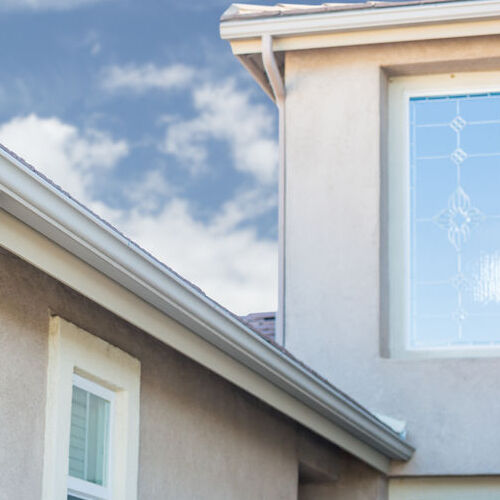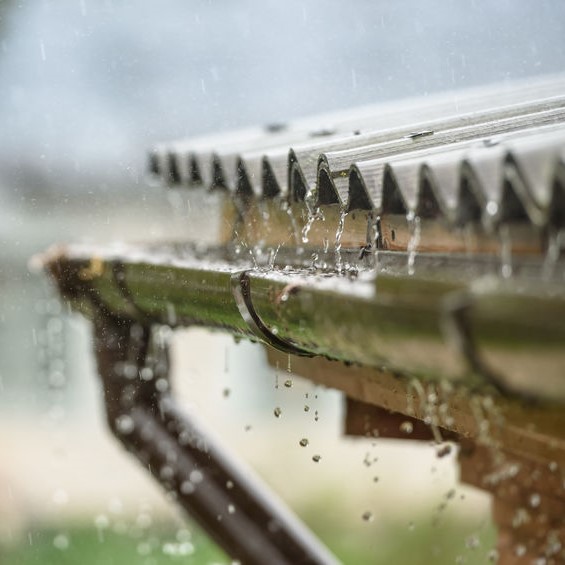
Do seamless gutters need cleaning?
One reason people choose seamless gutters for their homes: less debris like leaves and twigs get caught in them. And less debris means less time and money spent cleaning them. This doesn’t mean seamless gutters never need to be cleaned. Leaves, twigs, and other debris can still get snagged in the connecting points at corners and downspouts. It’s good to periodically check your gutters in these areas, especially if water isn’t draining well, to see if anything needs to be cleared. If you are interested in installing seamless rain gutters in Canton, GA, check in with the gutter experts at Affordable Gutters Plus LLC. We offer a wide range of gutter and roofing solutions. Find out more by calling 770-735-4433.
Are seamless gutters worth it?
If you need new gutters, you might want to consider seamless gutters over standard sectional gutters. One advantage you’ll have with these types of gutters is less debris, which means less cleaning and fewer problems like leaks. Some of the pros and cons of these types of gutters include:
Pros
- Stronger than traditional gutters
- Fewer problems with leaks
- Customized lengths
- Low maintenance
- Easier to install
Cons
- Not suitable for do-it-yourself
- More expensive
- Contractor required for installation
- Difficult to repair
Are seamless gutters really seamless?
Technically, seamless gutters aren’t 100% seamless. There are seams at corners an downspouts, but the main lengths of the gutter have no seams. The corners and downspouts will require the most maintenance with this type of gutter.
What colors do seamless gutters come in?
Seamless gutters come in a variety of colors to match your home’s design. Colors range from eggshell white to ivory to green to a wide range of shades of blue to brown, black, and gray. Most of these colors will be available for five-inch and six-inch gutters.
Do I need 5 or 6 inch gutters?
While five-inch gutters are standard for both sectional and seamless gutters, many homeowners are installing six-inch gutters. This size of gutter does have advantages, especially in the capacity to handle as much as 40% more water. Six-inch gutters are especially valuable for larger, steep-pitched roofs because water runs down these roofs faster than on other roofs. Water also runs down metal roofs faster than asphalt, so six-inch gutters are also recommended in this case. Wider gutters are also recommended when you have fewer downspouts or when you have gutters draining into other gutters. If you are planning to install half-round gutters, you’ll also want a six-inch gutter to lessen overflow.
Seamless gutters with leaf guard
If you want to lower your chances of getting leaves and other debris in your seamless gutters, you can have a leaf guard installed. Besides protecting your gutters from debris, leaf guards also shield your gutters from birds and other animals nesting in them.
Can seamless gutters be repaired?
While seamless gutters are sturdier and less prone to leaks than sectional gutters, they can still get damaged or need repairs, especially if they pull away from the house. The difficulty of repairing these gutters is one of their few drawbacks, but repairs can be made without having to replace the whole gutter system.
In fact, there are a few repairs such as patching that are actually relatively simple and inexpensive to make. Small holes—about the size of a nail hole—can be patched by cutting a piece of flashing for your patch, bending it so it fits the gutter, and then attaching it with roofing cement and sealing it with caulk or more roofing cement. You can repair even smaller holes by plugging them with roofing cement or silicone caulk.
Can seamless gutters be detached and reset?
If you need to remove your gutters to make repairs to the soffit or fascia other parts of the roof, you will have to detach the gutters from your roof. This is generally done by disassembling them at the corners and the downspouts. It’s also recommended that you remove your gutters if you are having your roof replaced to prevent the gutters from being damaged. The gutters can simply be reattached after the new roof is put on. If your gutters are damaged or leaking and in need of serious repair, you might want to put on new gutters when replacing your roof. If your gutters are in good shape, however, there is no need to do this.

Who installs seamless gutters near me
Seamless gutters offer several advantages over sectional gutters, including fewer issues with debris and leaks. If you want to take advantage of those benefits in Canton, GA, look to the experts at Affordable Gutters Plus LLC. We can find the gutter solution that’s right for you and your home. Find out more about what we can do for you or schedule a time for an estimate by calling 770-735-4433.














